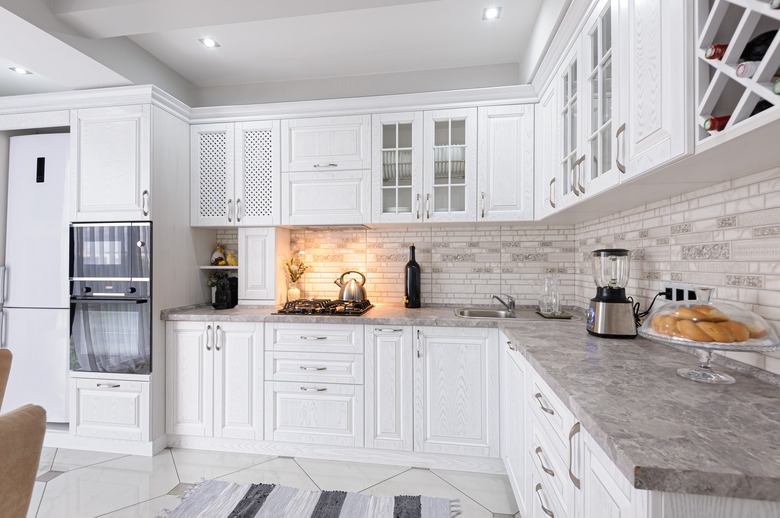How To Make Concrete Countertops Look Like Marble
If your concrete countertop is beginning to look a little drab or you're simply ready for a change, there is no need to replace the countertop and start over. Faux finishing techniques allow you to change the look of the sealed countertop to emulate other materials such as marble. Practice your marbling technique on scrap paper or cardboard first to build up your confidence and application skill, which can add realism to the look of your finished faux marble countertop.
1. Choose Contrasting or Complementary Colors
Choose paint colors that work with your decor for your concrete countertop. You can have something that's high-contrast or something that blends nicely with the surroundings. Find the marble coloring and texture you like and keep an image of it close by as you try to duplicate it on your countertops.
2. Clean Countertops Thoroughly
Put on gloves and clean your concrete countertops thoroughly with mild soap and water. Allow them to fully dry before going on to the next step.
3. Patch and Seal
Sand around any areas with holes and dents, and fill them with concrete patch. Level off the excess with a putty knife. Allow the concrete patch to dry, and sand it smooth. Wipe off the counters again with a dry cloth. Cover the patched-up areas with sealer.
4. Use Painter's Tape
Protect surrounding areas that you do not wish to paint with painter's tape.
5. Apply a Primer
Put on a mask and apply a primer designed for concrete. Mix some of the base coat color with the primer (1part base coat to 3 parts primer) for better color coverage. Allow it to dry, and apply a full coat of base color. Allow this to dry also.
6. Mix Glaze and Topcoat
Mix the acrylic glaze with the topcoat color, 1 part paint to 4 parts glaze, in a large plastic bucket.
7. Dip Drop Cloth in Glaze
Drop a 2 x 2-foot section of plastic drop cloth into the glaze, shaking off any drips as you remove it. Wear rubber gloves while doing this, as it can be quite messy.
8. Lay Drop Cloth on Countertop
Lay the plastic on the base coat, scrunching it up in places; then lift it off. The scrunching will leave behind cracking and veining patterns. Repeat this process, using fresh drop cloths each time until the surface is covered with this texture. Allow the paint to dry completely before applying the veining. This is very similar to a process known as frottage.
9. Add the Veining
Dip a turkey feather or dagger brush into the veining paint. The color of the veins is up to you; marble veins can be lighter or darker than the base coat. Check the patterns on the image of marble you've selected to mimic. Lightly touch the tip of the feather or dagger brush on the glazed surface and try to duplicate the size and direction of veins in the image. You can also practice on a piece of paper beforehand if you're feeling uncertain.
10. Apply a Sealer
After the veining is dry, apply a sealer that's especially designed for painted concrete surfaces.
